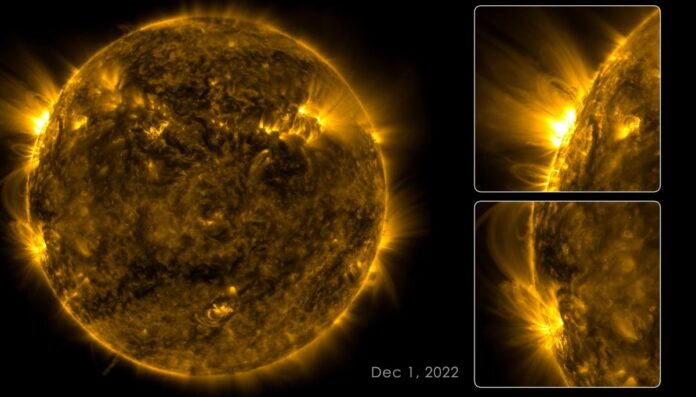The sun is a constant presence for all life on Earth, bringing light, warmth and splitting our days and nights. But the sun is more than just a bright light in the sky and a new NASA video reveals its ever-changing surface in a stunning time-lapse that spans 133 days.
The new sun video, which NASA released on YouTube Jan. 5, shows the sun as it appeared over four months from Aug. 12 to Dec. 22 in 2022. NASA’s Solar Dynamics Observatory (SDO) captured the video as part of its constant watch for solar flares and other space weather.
Scientists then compressed the video so that all 133 days of it take up just 1 hour of your time. The video above, created by our Space.com team, compressed the SDO time-lapse even further, squeezing all 133 days of sun videos into just 2 minutes.
Related: The sun’s wrath: Here’s the worst solar storms in history
You can see the full 1-hour video on YouTube (opens in new tab) from NASA’s Goddard Space Flight Center team. SDO observes the sun with three different instruments, taking a picture every 0.75 seconds.
“This 133-day time lapse showcases photos taken at a wavelength of 17.1 nanometers, which is an extreme-ultraviolet wavelength that shows the sun’s outermost atmospheric layer: the corona,” NASA wrote in a video description on YouTube. Check out the full video from NASA Goddard below (and rock out to the music of Lars Leonhard’s “Geometric Shapes” album).
In the video, you can see bright, active regions of super-hot plasma roiling across the surface of the sun as it rotates on its axis, making one complete spin ever 27 Earth days.
“The loops extending above the bright regions are magnetic fields that have trapped hot, glowing plasma,” NASA wrote. “These bright regions are also the source of solar flares, which appear as bright flashes as magnetic fields snap together in a process called magnetic reconnection.”
You might see some dark moments in the video. Those were caused by eclipses of the Earth and moon as they passed between the SDO spacecraft and the sun.
“Other blackouts are caused by instrumentation being down or data errors. SDO transmits 1.4 terabytes of data to the ground every day,” NASA wrote. “The images where the sun is off-center were observed when SDO was calibrating its instruments.”
SDO is one of several space-based observatories keeping constant watch on the sun for signs of potentially dangerous space weather. SDO launched in February 2010 and has spent nearly 13 years recording live views of the sun in stunning 4K resolution.
“SDO and other NASA missions will continue to watch our sun in the years to come, providing further insights about our place in space and information to keep our astronauts and assets safe,” NASA wrote in the video description.
Email Tariq Malik at [email protected] or follow him @tariqjmalik (opens in new tab). Follow us @Spacedotcom (opens in new tab), Facebook (opens in new tab) and Instagram (opens in new tab).

